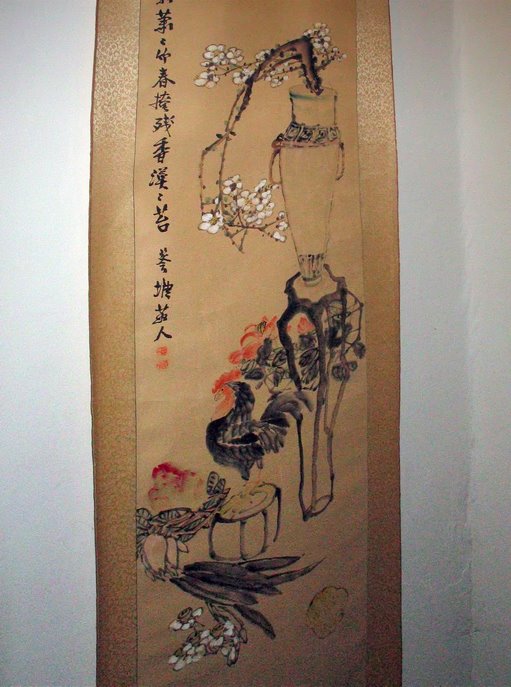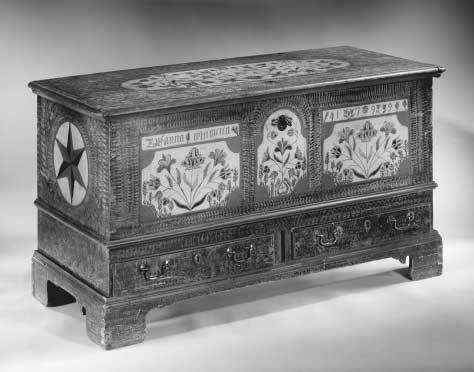To answer such a question, it would be necessary and interesting to briefly review the history of Beijing’s preservation of culture heritage.
Before the Chinese Communist Party (CCP) took power in 1949, Beijing, which had been the capital for almost 500 years, was a masterpiece of Chinese architecture. It was surrounded by monumental city walls with nine gates to separate inner city and its suburbs. Those gates were of titanic structure, mostly with two or three floors.
Jian Lou (pictured), with its grand base balanced with elegant eaves of pavilion canopies had not been equaled throughout the country. In fact, there were 47 such gates in the whole area with diverse variety in size and style. Yet only two gates have survived today and no single brick from the ancient city walls can be found in Beijing. In 1950’s China equated the number of chimneys and number of steel plants to the degree of industrialization and civilization.
Sicheng Liang, the famous architect and the associate

mayor was almost sent to prison for his advocate that Beijing be kept as what it was and like Washington, DC, no industry be developed within the city. Beijing government simply regarded the infrastructure of the city as too cumbersome. Therefore, the walls and gates, which had been treasured and kept even during the civil war period, was destroyed into rubble under succession of canon shots fired by the government troops.
The Cultural Revolution, which began in the year of 1965, is a catastrophe of Chinese cultural heritage. Fundamentally, it made more change mentally than geographically: No one dared to say history should be preserved even though some still cared. Among them
Premier Zhou should be remembered forever for his determination and courage. On August 18, 1966,
Chairman Mao interviewed with a group of Red Guards and encouraged them to “completely get rid of thousands of years of class exploitation caused by poisonous old thinking, old culture, old customs and old habits”. On the same night, Premier Zhou was informed that the Red Guards were planning to attack the Forbidden City, the symbol of Feudalism at that time. He immediately mandated an order to close the museum and sent a battalion of troops for protection. On the next day, no matter how the Red Guards shouted and threatened, museums staff refused to open the doors , whose gigantic size (10 meters tall) and astonishing solidity made the effort of sabotage trivial and nonsense. Eventually the doors had been closed for another 5 years, when the political reforms changed their focus from destroying places to torturing minds.
From 1980’s to the 1990’s, Beijing underwent a second round of city expansion and high-rise were unavoidable due to the pressure of increased population density. One of the problems is that the Forbidden City was not built for convenience and it resides in the heart of the city and blocks the traffic from going through directly. The city decided to build highways in a similar rectangle fashion as the museum. The one closest to the Forbidden City is called the Second Circle (since the rectangle circumference of the Forbidden City is regarded as the first one), the next outer layer the Third Circle. Today the city has expanded to its sixth circle. To keep the integrity of architecture within the Second Circle, no more skyscrapers would be allowed to build in case they overshadow the Forbidden City, the Great Hall of the People (similar to the capitol) and the monument in Tan’an Men Square. While the decision was well perceived and executed, the government went too far for strategic planning: Within the city limits on the top of all tall buildings should be built a traditional pavilion with a round canopy decorated with flying eaves and curving ridges. Local residents call them “Pencil Tip” because if viewed from faraway; those skyscrapers look like sharpened drawing pencils with varying girdles. (Unfortunately, the same type of mistakes has been made repeatedly by the Beijing Government: The non-experts administer and make decisions for the experts.) The result as a whole is so incongruent and bizarre that one feels the same ridicule as seeing a guy wearing a monk robe toped with an Armani suit.
Luckily, the Pencil Tip joke finally went up to the ears of decision makers although no mistakes were acknowledged. Surprisingly, the city decided to embrace fresh ideas of modernity and the Avant Garde flooded into the land which has been in a closeted mind o long.
The winning of the bid for Olympic Games in 2008 has made its permanent mark on the skyline of the ancient city: Currently, all big skyscrapers under construction were designed by foreigners, including the CCTV Headquarter building, the Bird Nest (official stadium for 2008 Olympics) and its companion Water Cube, and the National Grand Theatre which is built besides the Forbidden City.
 Koolhaas
Koolhaas’ singular and flamboyant design of CCTV Headquarter has been referred as “Wei Fang” (dangerous building, very likely to collapse) by the locals (Beijing is in a high seismic zone). It is eye-catching and mind-challenging at any angle because of its height and size; therefore it dominates the whole area and defying the symmetry and simplicity of the architecture in surrounding areas. Although Bird Nest and Water Cube are built far away north of the city, they are placed along the central axis line of Forbidden City where ironically the ancient gates, if still existed, would not be not too far away. The design of Bird Nest has been criticized as material-wasting because most of the steel beams, randomly nested above the stadium, were for aesthetic purpose only. Water Cube, with its dreaming bubble shell, brings such a challenging question that no expert has been able to answer yet: How to clean the irregular unevenly heaved and flattened surface of the whole stadium? (Beijing is so dusty that white collars put on their shirt only inside the office to avoid them get stinky on the road.)
But most of all, there stands the
National Grand Theatre, a glossy, semi-transparent giant egg glittering in front of red walls of the Forbidden City. The project was initiated by the previous president of China, Zeming Jiang who is an ardent classical music fan. But the project had been postponed because of its monstrous initial budget, until Beijing became the host for 2008 Olympic Games. Suddenly all projects and budgets were well justified, and with

the support of tax money collected from the whole country, luxury and extravagance are nothing but necessary.
Paul Andreu, the architect, does have an eye for beauty, but probably not for harmony and efficiency. The building has gained names from a boiling egg to jellyfish and worst of all – a giant tomb which is quite accurate to describe one’s feelings after he first steps down an underwater-tunnel of one hundred meters before he resurfaces to the lobby.
From the financial point of view, the initial 3.8 billion Yuan budget (it has almost eight floors underground) plus its 4 million Yuan monthly electricity bill if fully operated would have certainly failed to pass the congress in US. But more importantly, the atmosphere of antiquity is lost when the orderly lines and squares in red and gold clashed with the shining edgeless silver dome. Some proponents argue that the building will in the end win the people’s hearts in the same way as the glass pyramid to Parisians’. However, the pyramid still obeys the rule of symmetry and its size is not protruding in front of the classical Louvre building. In contrast, the length of the Nation Grand Theatre is almost one third of the length of the Forbidden City. To understand its impact, one could just imagine putting an amplified version of “
Cloud Gate” (the statue in Chicago Millennium Park) with a size comparable to the State Capitol in the National Mall of DC!
Through decades, Beijing government has shown its inability in preservation of cultural heritage by making mistakes ranging from sabotage, disfigurement and destruction. Thus it urges one to probe deeper to understand why a tiny coffee shop inside the Forbidden City matters so much that newspaper and television haven’t stopped bombarding the topic.
First, the Forbidden City is
NOT a museum for most of Chinese. For them, the architecture of the palace is not as important as the fact that it was once occupied by those who ruled the country. Even though the last emperor was kicked out the palace in 1924 and feudalism is described as an evil and cruel system destined to be eliminated, the minds of most Chinese have been wired firmly from the root that there always exists the majesty, any defiance against which must be punished. Some scholars call it servile nationality. In ancient times, the textbooks started with the quote “
There is no place in the world which does not belong to the emperor; there is no man living in this country who is not the subject of the emperor.” Nowadays students are required to prepare for the question of “why can only Chinese Communist Party save China” for exams from elementary school to graduate study. The silent majority here have lost their genes of speaking out against the power because they have been deafened from years of servility indoctrination.
Above all, the Forbidden City with its majestic symbolism and intact solemnity, justifies their tolerance of tyranny in the past and numbness toward injustice under the reign of CCP.
Secondly, it is necessary to honestly answer the question that if a room-size foreign brand store may trample the solemnity, how come a exotic giant “egg” be allowed to put beside the museum? Starbucks lacks the political support from both US and Chinese governments. It is true that the comment started from an anchor from a TV station, but in China what to comment on TV and what to write on newspaper are fully controlled by the government. The latter saw the opportunity of attacking an American company without causing tension between the two countries. More importantly,
it helped boost national pride and increase animosity toward US in the younger generation.

On the other hand, although more than 150 scientists and engineers had stated their objections against the National Grand Theatre project, the voices became inaudible after most media sifted them out since for them the decision made by the administration must not be questioned. Instead they projected a positive image by
equating the establishment of a single building at the most important location of the city to the landmark achievement of spiritual civilization.
The Starbucks quit in a decent manner: Officially it was closed because of the current renovation project. But without political reforms, it may never return even when the project is finished in 2020. Under the surface of the so-called determination of heritage preservation is the extreme provincialism and ugly servility. Sadly, being a Chinese and in particular a Chinese who used to live in Beijing, I feel ashamed.





























